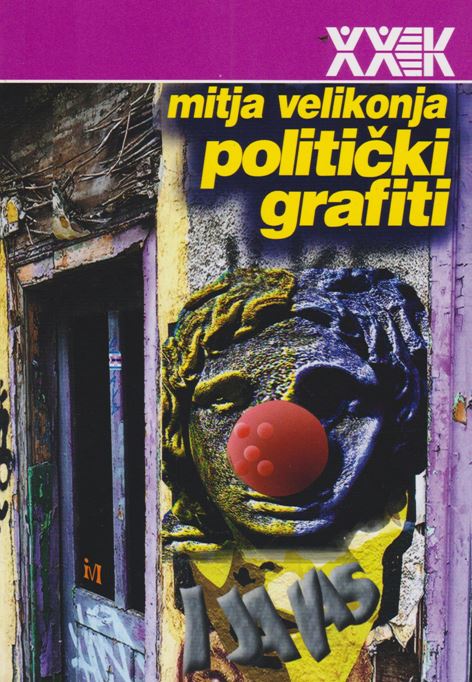We are pleased to inform our readers of the release of Bibioteka XX vek’s 246th book, a capital study by Mitja Velikonja of graffiti and street art.
Mitja Velikonja
Political graffiti:
Examples from the post-socialist states of the Balkans and Central Europe
Translated from English by Slobodanka Glišić
384 pages
Price: 900 dinars
Mitja Velikonja (1965) is a professor at the University of Ljubljana, where he teaches cultural studies and is the director of the Centre for the Study of Culture and Religion. His principal areas of research are contemporary Central European and Balkan political ideologies, subcultures, collective memory, and post-socialist nostalgia. He has been a visiting professor at the Jagiellonian University in Krakow (2002-2003), Columbia University in New York (2009 and 2014), the University of Rijeka (2015), and Yale University in New Haven (2020). He has been a visiting researcher at in Philadelphia (2004-2005), at the Netherlands Institute for Advanced Study (2012), and at the Remarque Institute of New York University (2018). He edited (with Dino Abazović) the collection Post-Yugoslavia – New Cultural and Political Perspectives (Palgrave, 2014). In addition to this book, Biblioteka XX vek has published translations of his works Eurosis – A critique of the new Eurocentrism (2007) and Titostalgia: A study of nostalgia for Josip Broz (2010), as well as the book Heavenly Yugoslavia: Interactions between political mythology and pop culture, coauthored with Vjekoslav Perica (2017).
In this study Mitja Velikonja lays the foundations for a new interdisciplinary field – graffitology. In the first section the author introduces us to theoretical and methodological problems in the study of graffiti and street art, and in the second he ofers an analysis of post-socialist graffiti in the Balkans and Central Europe. These „case studies“ are dedicated to graffiti with nationalist and far-right messages of hate, football fan graffiti, graffiti on the themes of Yugoslavia, disputed heroes (Gavrilo Princip and Rudolf Maister), Triglav mountain (as a political symbol), and migrants.
“Political graffiti and street art are above all political art, artivism, showing a specific street-based connection betwen politics and aesthetics. They are visual political acts. What happens when art „hits against the wall“? Is the act of graffiti political in itself or does the message also have to be political? Who inspires the spray of graffiti, why, how, against and for whom? What are the unique qualities of political graffiti, what visual ideologies does it advance? In short: what is political in the scrawls on the walls of contemporary cities?“ (from the Preface)
The book is richly illustrated with the author’s photographs of graffiti.
